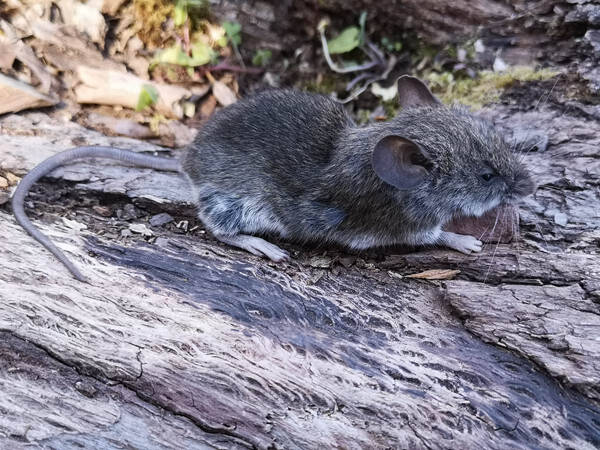Mus pahari
IUCN
LCBasic Information
Scientific classification
- name:Mus pahari
- Scientific Name:Mus pahari
- Outline:Rodents
- Family:Rodentia Muridae Mouse
Vital signs
- length:83-95mm
- Weight:17-30g
- lifetime:
Feature
The body is small, the ears are light brown, the back is brownish brown, the hair base is dark black, the tail is dark brown above and grayish white below. The four legs are white.
Distribution and Habitat
In China, it is distributed in southern Tibet, Yunnan, Sichuan, Guizhou and Guangxi. Abroad, it is distributed in Vietnam, Laos, Cambodia and Thailand.
It mainly inhabits farmland and artificial woodlands with more weeds. It prefers a relatively humid habitat. It is omnivorous.
Appearance
There is a notch on the rear edge of the incisors, and the length of the first upper molar is half the length of the entire upper molar row. It is about the same size as a house mouse, weighing 17-30g (average 24g), with a body length of 83-95mm (average 88.5mm), a tail length slightly shorter than the body length, 76-91mm (average 82mm), a hind leg length of 18-21mm (average 19.4mm), and relatively large ears, 15-17mm (average 15.7mm). It has no long hair and is covered with short, dense gray hair. The back of the body is blue-gray, and the base of the hair on the ventral side is gray, with white hair tips. The boundary between the back and ventral hair colors is obvious. The back of the front and back feet is white. The tail is the same color, the tail hair is sparse and short, the ring pattern is obvious, and there is no hair bundle at the end of the tail.
Details
The taxonomic status of Sikkim mice is stable and there is little controversy. There are many subspecies, few studies on subspecies, and the status of several subspecies is unclear.
Sikkim mice (scientific name: Mus pahari) are animals of the genus Mus in the family Muridae. In mainland China, they are distributed in Tibet, Guangxi, Guizhou, Yunnan, Sichuan and other places. They generally live in tropical mountain rain forests and subtropical mountain evergreen broad-leaved forests at an altitude of 850-1300 meters. The type locality of this species is in Sikkim.
This species has been listed in the 2013 IUCN Red List of Threatened Species ver3.1—Low Concern (LC).









